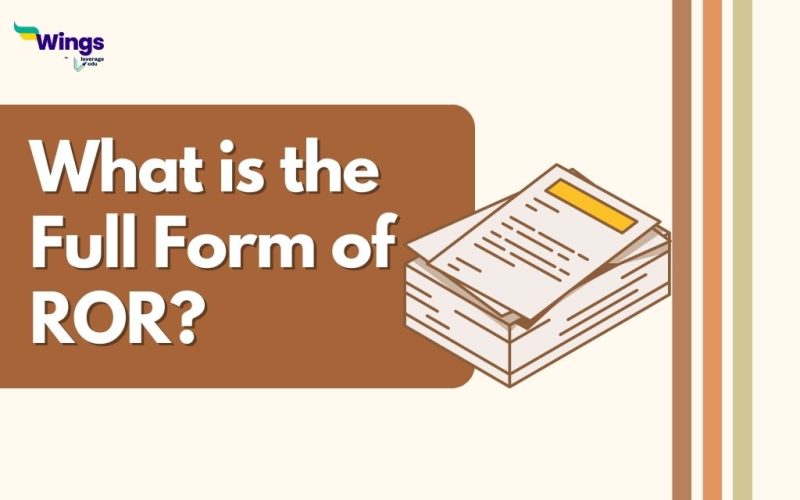Purchasing a land generally means a ton of paperwork. You need to have all the correct documents to have an official and legal claim over it. ROR is one such document that you must possess as a landowner or tenant. But what is ROR, and what does it stand for? This blog will explore the ROR full form along with its importance and the information it contains about a piece of land. Read on to know more!
ROR Full Form
The ROR full form stands for Record of Rights, a document that contains the details of the ownership, rights, and liabilities of a piece of land. It is also known as Khatauni, Jamabandi, or Patta in different states of India. It is a term used in land administration and revenue management
Why is ROR Important?
The Record of Rights is an important document that serves various purposes, such as:
- It establishes the legal title and ownership of a landowner or a tenant over a piece of land.
- It records the type, extent, and value of the land and its crops, buildings, and other assets.
- It records the rent, tax, cess, and other dues payable by the landowner or the tenant to the government or other authorities.
- It records the rights and obligations of the landowner or the tenant in relation to the land, such as easements, mortgages, leases, transfers, etc.
- It records the history and changes in the ownership, rights, and liabilities of the land over time.
What does an ROR contain?
The local revenue office or the tehsildar at the village or district level maintains the Record of Rights. They update it periodically through surveys, mutations, settlements, and adjudications.The Record of Rights consists of various types of information, such as:
- The name and address of the landowner or the tenant.
- The survey number or the plot number of the land.
- The area and measurement of the land.
- The classification and use of the land (agricultural, residential, commercial, etc.).
- The crop and yield of the land (if applicable).
- The rent and revenue assessment of the land.
- The encumbrances and charges on the land (if any).
- The remarks and notes on the land (if any).
Anyone with an interest in the land or wishing to verify its status can access the Record of Rights from local revenue offices or various websites online. The Record of Rights may also be issued as a digitally signed certificate or a printout.
The Record of Rights is an essential document for anyone who owns or occupies a piece of land in India. It provides legal security and transparency in land transactions and disputes. It also helps in planning and implementing various development schemes and policies related to land.
FAQs
Sure, here are three short FAQs about ROR (Record of Rights):
- What is the full form of ROR?
The full form of ROR is the Record of Rights. - What information does ROR contain?
It contains details of land ownership, rights, liabilities, and historical changes. - Where can you obtain an ROR?
You can obtain it from local revenue offices or online portals in India.
Related Blogs
Related Blogs
We hope this blog has helped you understand the full form of ROR and everything related to it. If you want to know more, find the 300+ full forms list on our blog. In the world of short forms, you can rely on the Leverage edu page to know about more full forms like this! Connect with us, study abroad experts, to achieve your international dream today!
 One app for all your study abroad needs
One app for all your study abroad needs













